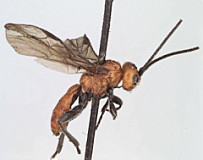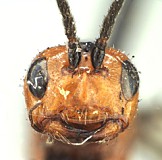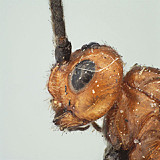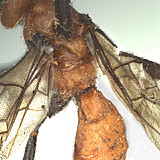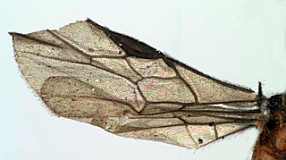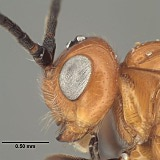Diachasmimorpha mexicana Cameron, 1887
In his redescription of this species, Fischer (1967b) noted that the specimen labeled as the type in BMNH is a male, but Cameron (1887) indicated in his original description that he was describing a female. The excellent figure in Cameron (1887) matches the type specimen, providing additional evidence of Cameron’s error (either misinterpretation of the male genitalia as an ovipositor or, more likely given the general quality of Cameron’s early work, a typographical error).
See additional remarks under Diachasmimorpha hildagensis (Fischer).
This species is very similar to Diachasmimorpha sanguinea (Ashmead). Careful comparison of the two suggests that Diachasmimorpha sanguinea is a more heavily sculptured species with a distinctly larger eye. Diachasmimorpha sanguinea has frequently been reared as a parasitoid of Zonosemata infesting Solanum in the southern U.S., whereas the name mexicana has previously been applied to the species attacking Rhagoletis in Mexico. After comparison of the holotype of mexicana in 2011 (Figs 1-5), I now conclude that the parasitoid of Rhagoletis in Mexico is not Diachasmimorpha mexicana due to differences in color and size of the eye.
Type locality: Mexico, D. F., Chapultepec.
Diachasmimorpha mexicana has been recorded as a parasitoid of Rhagoletis in Mexico (Rull et al. 2009), based on initial studies by Wharton. More detailed recent work indicates that the species attacking Rhagoletis is the newly described Diachasmimorpha martinalujai Wharton, and as a consequence, there are no confirmed records of hosts for the true Diachasmimorpha mexicana.

